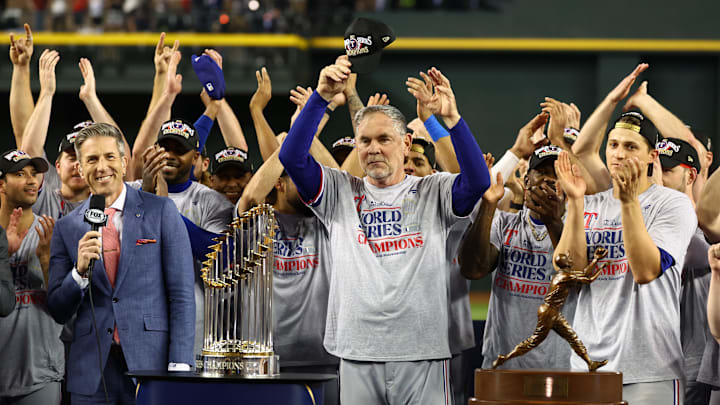MLB Playoffs Format, Dates & More: Everything You Need to Know

The 2024 MLB Playoffs are swiftly approaching as teams enter the final stretch of the regular season. The regular season officially comes to an end on Sept. 29, clearing the path for some exciting October baseball in the fall.
The MLB postseason is anticipated to run from Tuesday, Oct. 1 to Saturday, Nov. 2, though those dates are subject to change. The format of the MLB postseason has changed in recent years, so it could be a good time for a refresher on all the small details including dates, seeding, format and even tiebreakers.
MLB Playoffs Format
Seeding
12 total teams make the MLB postseason, including six wild card teams from both the American League and National League. Seeding for the playoffs is determined by regular season record and division winners. The No. 1 through No. 3 seeds are based upon the regular season records of each division winner, while No. 4 through 6 is settled via the wild card. The best record among wild card teams will earn the No. 4 seed, and the last team to make it in will be the No. 6 seed.
Tiebreakers
If there are two teams with the same record, there will not be a 163rd game (Tiebreaker game) played. Instead, the tiebreaker will be determined off the field by comparing the teams' head-to-head record. If the head-to-head record is the same, the intradivision records will be the next determining factor. If no winner can be determined still, interdivision records will come under the microscope.
Matchups and Home Field Advantage
The No. 1 and No. 2 seed from each league will earn a first-round bye and won't participate in the wild card round. The wild card round will see the No. 3 seed take on the No. 6 seed and the No. 4 seed matched up with the No. 5 seed in a best-of-three series. Home field advantage goes to the team with the better seeding.
The winner of the series between the No. 4 and No. 5 seed will advance to play the No. 1 seed in the divisional round, while the No. 2 seed will take on the winner of the matchup between the No. 3 and No. 6 seed.
The divisional round is a best-of-five series, and the winners of those series will play in a seven-game set in the league championship series (ALCS/NLCS), another seven-game set. The winners of those series will meet in the World Series.
World Series home field advantage is determined by regular season record, regardless of postseason seeding. If their records are the same, a tiebreaker will determine who gets home field advantage based on head-to-head and intradivision records during the regular season.
MLB Playoffs Dates
The 2024 MLB Playoffs are set to begin on Oct. 1. Tentatively, Game 1 of the World Series is scheduled for Oct. 25, though that could change if both the ALCS and NLCS are decided in fewer than seven games. That's a recent change being introduced in 2024, wherein the World Series could potentially begin as early as Oct. 22, depending on when the league championship series' conclude.
If the World Series ends up starting on Oct. 25 as expected, Game 7 would be scheduled for Nov. 2. If it starts on Oct. 22, Game 7 would be moved up to Oct. 30.
More of the Latest Around MLB
feed
